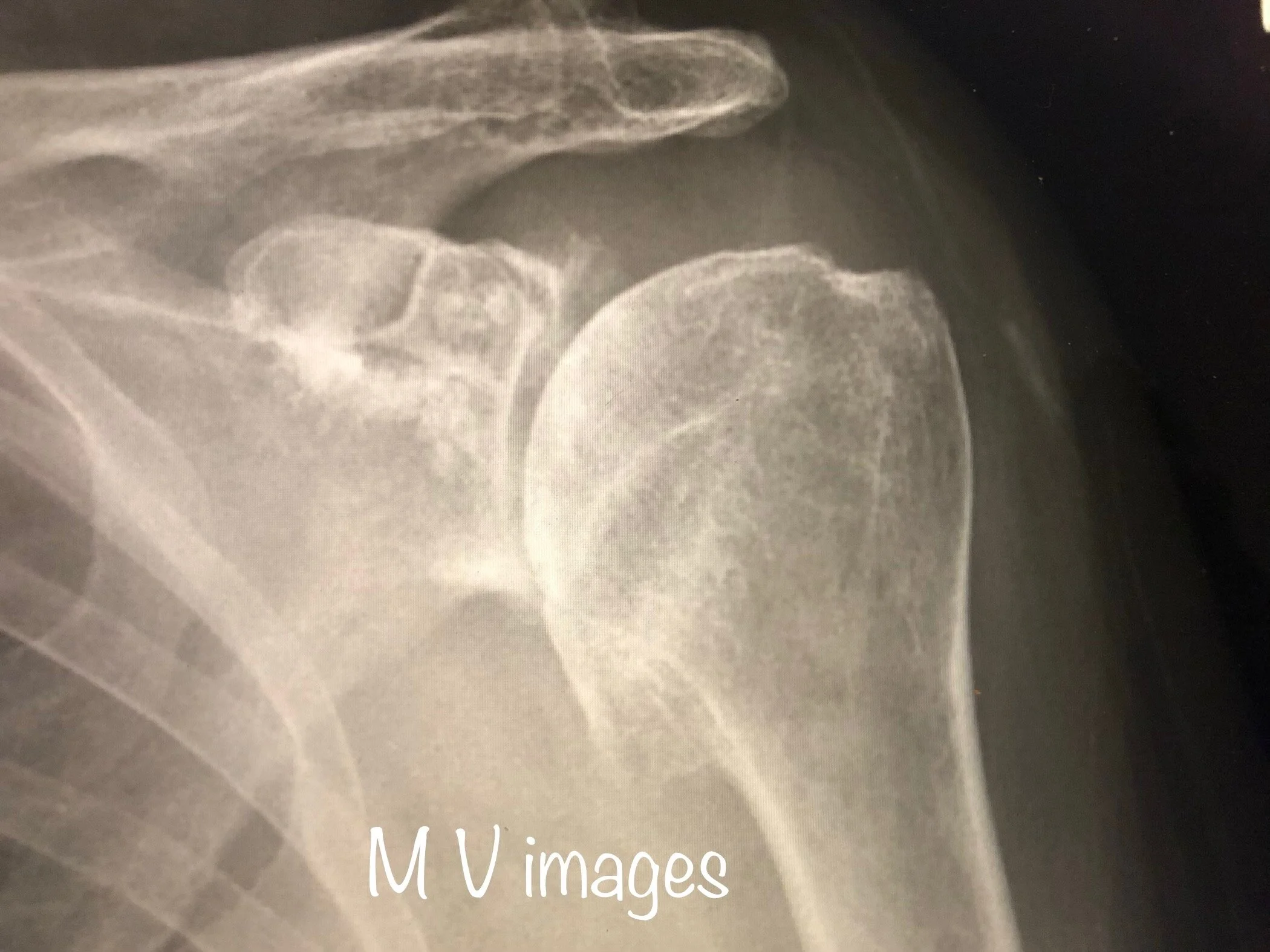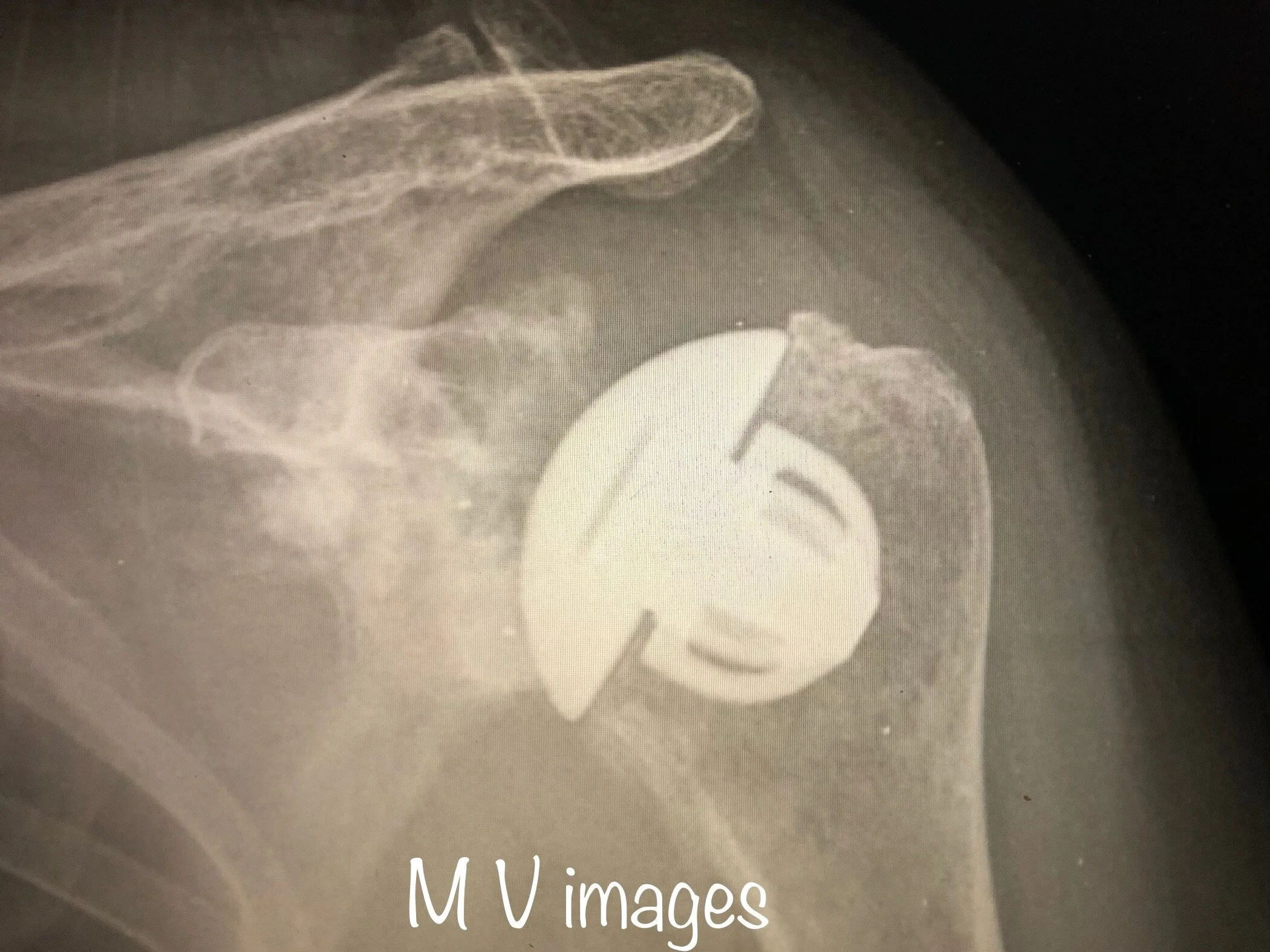
Shoulder arthritis
Shoulder osteoarthritis
Osteoarthritis of the shoulder occurs due to the progressive loss of cartilage that normally covers the moving joint surfaces. The cartilage is essential for the smooth pain free joint movement. Shoulder arthritis occurs due to a number of factors including; previous shoulder trauma or injury, inflammatory conditions (rheumatoid arthritis), previous surgery, genetics and overuse.
Symptoms of shoulder arthritis .
Pain
Stiffness
Reduced movement
Grinding sensation from joint
The image above is an arthroscopic view (keyhole) of the shoulder joint showing advanced arthritis. There is almost total loss of the smooth cartilage on the ball (humerus head) and socket (glenoid). This results in shoulder pain, stiffness, and sometimes a grinding sensation.
Treatment options
Pain killers
Physiotherapy
Lifestyle changes
Joint injections
Joint replacement
Shoulder arthritis & joint replacement
If the symptoms of arthritis worsen and can’t be managed by pain killers and joint injections, the final treatment is replacement of the joint. This surgery is performed under general anaesthesia.
Joint replacement cannot be performed through keyhole surgery techniques.
Before joint replacement
Advanced shoulder arthritis can result in the total loss of the smooth cartilage resulting in painful and stiff movement.
The above image is a X-ray of a shoulder with advanced shoulder arthritis with osteophytes. The patient had severe shoulder pain with poor quality of life and required joint replacement.
After joint replacement
The image above is a shoulder X-ray following a total shoulder joint replacement, where the ‘ball (humeral head) and socket (glenoid)’ are replaced.
Mathew uses the Mathys Medical shoulder replacement system.
Surgical scar 6 weeks following total shoulder replacement surgery
Recovering post shoulder replacement surgery
After surgery a sling is required for 6 weeks while in bed and when outdoors
Avoid getting the wound wet until totally healed, normally 2-3 weeks
Rehabilitation with physio starts immediately
Driving is not advised for around 8 weeks following surgery
Returning to work depends on the nature of your job - (office based 6 weeks)
Contact sports and heavy lifting is not recommended following surgery to prolong the life of the joint replacement.
Having a shoulder replacement should be regarded as the last treatment option to manage shoulder arthritis.
Mathew will carefully assess your symptoms and offer appropriate treatments.





